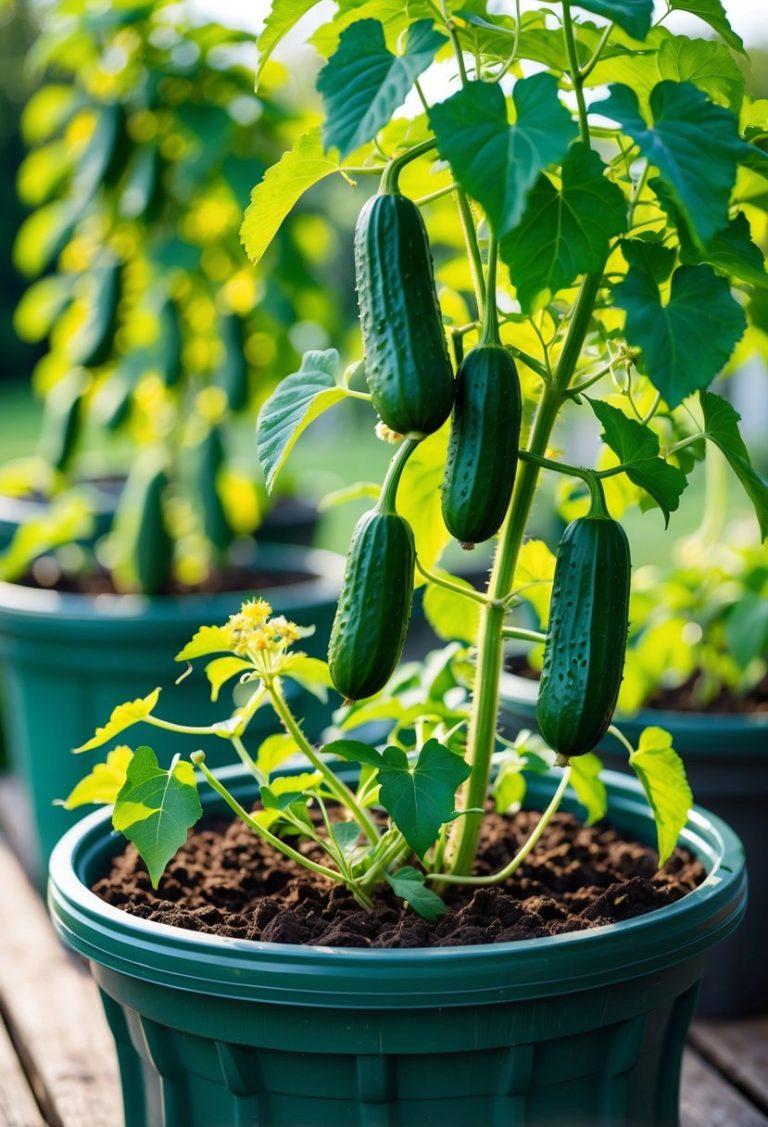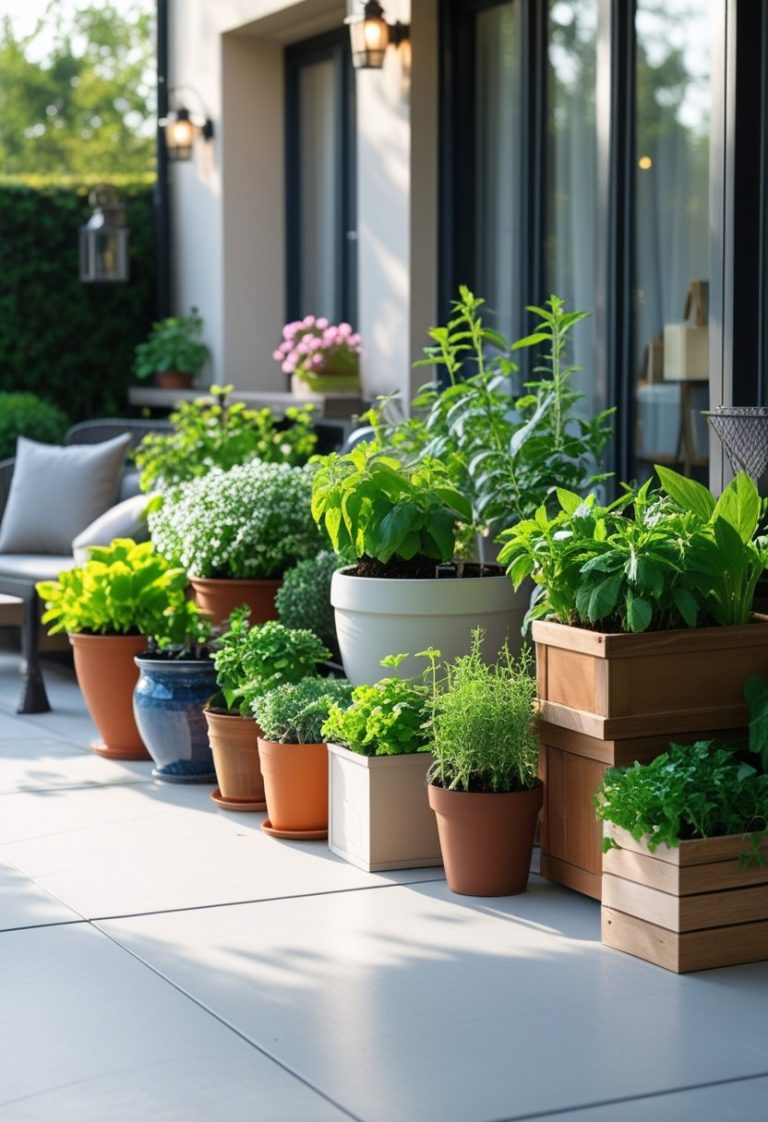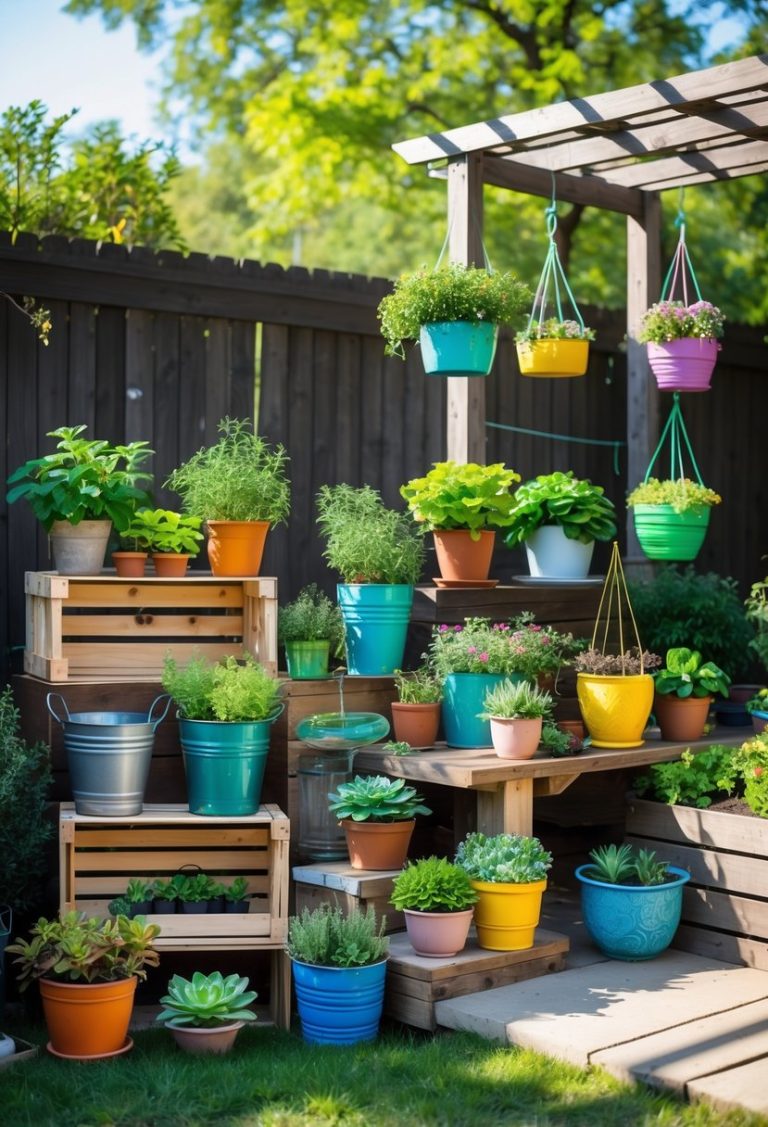How To Create A Container Patio Pond: Step-by-Step for Beginners
Creating a container patio pond is an easy and affordable way to bring a touch of nature to your outdoor space, no matter the size. You can use almost any waterproof container, from ceramic pots to barrels, to create a small pond that supports plants and even some wildlife. A well-planned container pond can become a vibrant, low-maintenance ecosystem right on your patio.

The key to success is choosing the right container and placing it where it gets the right amount of sunlight—usually partial sunlight for about six hours a day. Adding the right mix of aquatic plants will help keep the water clean and oxygenated, making your pond healthier for any fish or animals you may want to attract. With a simple maintenance routine, your pond can stay beautiful year-round.
You don’t need special equipment like pumps or filters unless your pond is large or stocked with fish. Regular water changes and trimming plants will keep the water clear and fresh. This guide will walk you through the steps to build and care for your own container patio pond, helping you create a peaceful, natural space you can enjoy every day.
Key Takeways
- Select a waterproof container and place it in partial sunlight for best results.
- Use a balance of aquatic plants to maintain water quality naturally.
- Keep up with simple care like water changes and plant trimming to sustain your pond.
Choosing the Right Container for Your Patio Pond

Selecting the right container shapes the look and function of your patio pond. You want a strong, safe material and the right size to fit your space and needs. Your container must also hold water without leaks to keep your pond healthy and attractive.
Container Types and Materials
You can use many container types, such as large planter pots, wooden barrels, metal tubs, plastic bowls, or pre-made pond kits. Materials like ceramic, fiberglass, granite, aluminum, steel, or brass are good because they resist breaking down over time.
Avoid plastic containers that contain PFAS chemicals, as these can leak harmful substances into your pond water. If you want a natural look, stone or ceramic works well. For a rustic style, wooden barrels sealed with waterproof paint are an option.
The container needs to be durable to hold water and support plants and any fish you plan to add. Choose a container that fits your style and will last outdoors.
Sizing and Placement Considerations
Choose a container size based on how much space you have and what you want in the pond. Larger containers let you add more plants and fish. If you want fish, remember they need enough space and water depth to live comfortably.
Most patio ponds are less than 12 inches deep unless you want bigger fish like koi. You should place the pond in a spot with some morning sunlight but not full sun all day to prevent overheating and excess algae growth.
Make sure the ground is flat and stable. Avoid areas near tree roots or underground pipes. The location affects your pond’s temperature, sunlight, and overall health.
Making a Container Watertight
Your container must hold water without leaking. Some containers are already watertight, like ceramic pots or metal barrels sealed at the factory. Others, especially wooden or repurposed containers, need a liner or sealant.
Use pond liners made from safe, waterproof materials to prevent leaks. If the container has holes or cracks, plug them with a water-safe sealant designed for ponds.
Avoid using paints or sealants that are toxic to fish or plants. Fish-safe epoxy or liquid rubber sealants are good choices. Test the container for leaks before adding water and plants to protect your patio and keep the pond functioning properly.
Step-By-Step Guide to Building a Container Patio Pond

Creating your container patio pond involves choosing and preparing the right container, setting a stable base and substrate, adding water and treating it properly, and installing essential equipment to keep the pond healthy. Each step is important for a safe, clean, and attractive water feature.
Preparing the Container for a Pond
First, select a container that holds at least 10 gallons of water. Common options include planter pots, large plastic tubs, or rubbermaid storage bins. If you want a custom look, you can use concrete containers but make sure they are sealed to prevent leaks.
Thoroughly clean your container with water and a mild, non-toxic cleaner. Avoid soap or chemicals that could harm fish or plants. If the container is thin plastic and bulges when filled, reinforce it by doubling up containers or adding support inside.
Make sure your container has no sharp edges inside that could hurt fish. You can smooth rough areas with sandpaper or line the bottom with a soft material like foam before adding gravel or rocks.
Setting Up the Pond Base and Substrate
Set your container on a level and firm surface, such as a wooden pallet or paving stones. This base prevents tipping or uneven pressure that could stress the container and cause cracks or spills.
Avoid filling the bottom with fine gravel, which traps waste and makes cleaning harder. Instead, place larger rocks or flat stones to create hiding spots for fish and allow water to flow more freely underneath.
If you want plants, add aquatic soil or a pond planting kit in pots, then place these in the pond. Water lilies and pondweeds like hornwort or anacharis are good choices. Keep the bottom mostly bare or with just a thin layer of gravel to make cleaning easier.
Filling With Water and Conditioning
Use tap water to fill your pond, but treat it first with a water conditioner to remove chlorine and chloramine. These chemicals are harmful to fish and beneficial bacteria.
Fill the water slowly to avoid disturbing any plants or substrate you installed. Once full, let the pond sit for a day or two to reach a stable temperature and allow any chemicals in the water conditioner to work.
Test your water quality for ammonia, nitrites, and nitrates before adding fish. Keep in mind, small containers need more regular water changes to keep the environment safe and comfortable for aquatic life.
Adding Essential Equipment
A filter is necessary to keep the water clean and oxygenated. Choose a filter rated for your pond size; internal sponge filters or hang-on-back filters are common choices. Filters also support bacteria that reduce harmful waste chemicals.
In colder climates, consider adding a heater to maintain water temperature above 10°C (50°F) to protect your fish during winter. Tropical fish usually need warmer water, so adjust heating accordingly.
You can also add accessories like a small fountain or airstone. These help circulate water and increase oxygen levels while creating pleasant sounds. Lighting and decorative items are optional but can enhance the pond’s look, especially at night.
Adding Life: Plants, Fish, and Wildlife

To bring your container patio pond to life, you need to focus on choosing the right plants, selecting fish that fit the size and environment, and creating a habitat that supports local wildlife. Each element plays a key role in balancing the pond ecosystem and making it a thriving, natural feature.
Selecting Suitable Aquatic Plants
Pick plants that stay small and adapt well to container environments. Floating plants like Water forget-me-not (Myosotis scorpioides) provide shade and reduce algae growth by limiting sunlight. Miniature water lilies such as Nymphaea ‘Pygmaea Helvola’ add beauty without taking over.
Include a mix of plant types: floating, submerged, and marginal plants. Marginal plants like Corkscrew rush (Juncus effusus f. spiralis) offer cover and a natural look. Use aquatic compost in planting baskets to keep roots healthy, and avoid using regular soil.
Aim for 3 to 5 plants to start. They will grow quickly and balance oxygen levels. Planting native species helps attract local insects, birds, and other pond visitors, supporting biodiversity in your small space.
Choosing Fish for Container Ponds
If you want fish, choose species that thrive in small, confined water areas. Goldfish and small koi need larger ponds, so avoid them for container ponds.
Better choices include small tropical fish or native species like mosquito fish, which help control insects. Keep in mind the oxygen level and temperature can change quickly in small containers, so avoid overcrowding.
Fish need hiding spots, so use plants and rocks to provide shelter and avoid stress. Feed fish sparingly to prevent water pollution, and never add fish if the pond is very small or unfiltered.
Supporting Wildlife in Container Ponds
Make your container pond friendly to wildlife by adding ramps or stones for easy entry and exit. Frogs, dragonflies, and birds are more likely to visit when they can move in and out safely.
Avoid adding water or animals from other ponds to reduce the risk of disease or invasive species. Use rainwater rather than tap water to keep nutrient levels low and discourage algae.
Create nearby shelter with plants or small logs to provide hiding spaces. Let nature introduce wildlife over time and you could soon see a range of small creatures enjoying your mini pond.
Maintenance and Seasonal Care

Your container patio pond needs regular attention to keep water clear and healthy for plants and any fish. Good care involves cleaning debris, balancing water quality, and adjusting for changing seasons. Taking these steps helps prevent common problems like algae and keeps your pond thriving year-round.
Routine Cleaning and Water Changes
Start by removing leaves, dead plants, and other debris from your pond weekly. Use a skimmer net for floating debris and a small vacuum or siphon for settled material. This helps stop decay that can harm water quality.
Change about 10-20% of the water every two weeks. Use dechlorinated water if you have fish. This fresh water reduces nutrient buildup that feeds algae growth. Avoid removing all the water at once to keep the ecosystem stable.
Check and clean pumps, filters, and fountains regularly. Clogged equipment reduces water circulation, which can cause stagnant water and promote algae growth.
Managing Water Quality
Test your water every week using a simple kit to check pH, ammonia, nitrites, and nitrates. Your pond’s pH should stay between 6.5 and 8.5 for healthy plants and fish.
Control nutrient levels to prevent algae. Excess nitrates and phosphates often come from decayed matter or overfeeding fish. Maintain a balanced number of aquatic plants to absorb nutrients naturally.
Add beneficial bacteria regularly. These bacteria break down waste and improve water clarity. Avoid harsh chemicals; instead, use pond-safe treatments if algae become severe.
Overwintering and Seasonal Adjustments
In fall, clean your pond thoroughly by removing fallen leaves and trimming back plants to prevent decay. Install a net over your pond to catch leaves.
Reduce fish feeding as water cools, since their metabolism slows. If your climate freezes, use a pond heater or aerator to keep a hole open in the ice to allow gas exchange.
Move delicate plants indoors if needed. Check pumps and filters before winter and prepare them for cold weather by cleaning and storing removable parts. This protection ensures your pond recovers quickly in spring.






